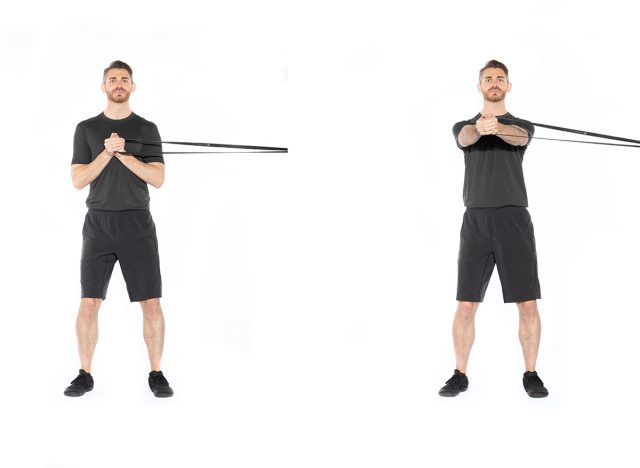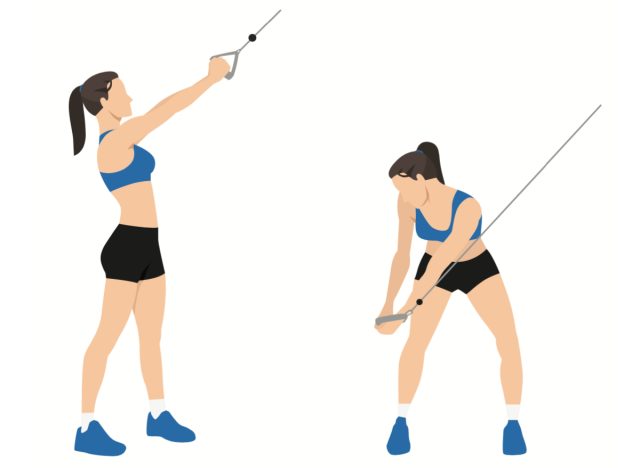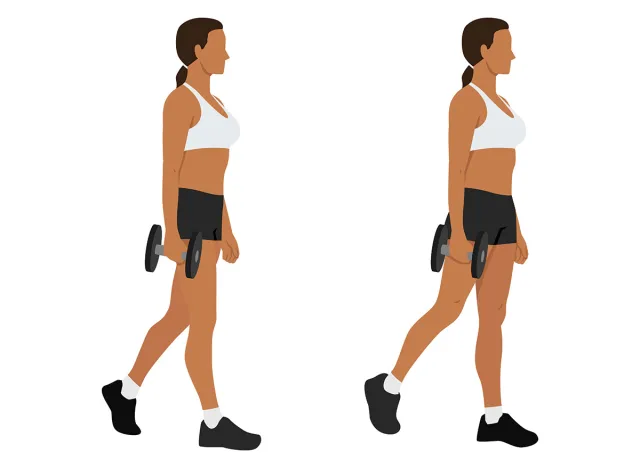These 3 Exercises Build Core Strength Faster Than Planks After 40

You’ve probably done your fair share of planks, and I’m not talking about grinding through grade school P.E. tests either. Planks are one of the best foundational core exercises. They teach you how to brace, align your spine, and activate key muscles that support the entire body. But after 40, it’s about building core strength that supports movement, posture, and real-world functionality.
The truth is, holding a static position like a plank will only get you so far. Sure, it builds isometric strength and endurance, but the core isn’t just meant to hold you still. It’s intended to resist rotation, generate power, and stabilize the body under dynamic loads. As we age, exercises that challenge our core in motion, such as carries, chops, and holds, become more valuable than ever.
That’s why the three exercises below are more effective than traditional planks in building functional core strength after the age of 40. They target multiple planes of movement, enhance balance and stability, and mimic real-life situations for which your core is designed.
Ahead, you’ll discover the three moves that go beyond the plank. You’ll also learn better ways to program them, modify them, and build a rock-solid core that holds up for decades.
3 Moves That Build Core Strength Faster Than Planks
Exercise #1: Pallof Holds

The Pallof hold trains your body to resist unwanted rotation, a key element of core control and spinal health. Unlike planks, it directly targets your anti-rotational strength, which helps protect your back, hips, and shoulders as you age. This makes it incredibly effective for building deep core resilience.
Muscles Trained: Rectus abdominis, obliques, transverse abdominis, glutes, spinal stabilizers
How to Do It:
- Attach a resistance band to a secure anchor at chest height.
- Stand perpendicular to the anchor point with feet shoulder-width apart.
- Grab the band with both hands and step away until there’s tension.
- Hold the band at your chest, then press it straight out in front of you.
- Keep your arms extended and resist the band pulling you back in.
- Hold for the desired time, then return and switch sides.
Recommended Sets and Reps: Knock out 3 sets of 20 to 30 seconds per side. Rest for 30 to 45 seconds between each set.
Best Variations: Pallof Press, Half-Kneeling Pallof Hold, Overhead Pallof Hold, Dynamic Pallof Step Outs
Strength Tip: Keep your ribs down and glutes engaged to prevent compensating with your lower back.
Exercise #2: Woodchops

Woodchops train your core through rotation, teaching it to generate and control twisting forces. This is crucial for everyday movements, such as turning, lifting, or reaching. As you age, rotational power often declines. This move helps you maintain your spine and protect it in the process.
Muscles Trained: Obliques, rectus abdominis, transverse abdominis, hips, lats
How to Do It:
- Attach a resistance band or cable at a high anchor point.
- Stand sideways to the anchor with feet slightly wider than shoulder-width.
- Grab the handle with both hands and pull it diagonally across your body to the outside of your opposite hip.
- Rotate through your torso and hips, keeping your arms extended.
- Control the movement back to the start.
- Complete all reps, then switch sides.
Recommended Sets and Reps: Knock out 3 sets of 10 to 12 reps per side. Rest for 45 to 60 seconds between each set.
Best Variations: Low-to-High Woodchop, Dumbbell Woodchop, Medicine Ball Rotational Slam, Cable Rotation
Strength Tip: Pivot your back foot and engage your glutes to protect your lower back during each rep.
Exercise #3: Suitcase Carry

The suitcase carry challenges your body’s ability to stabilize under an uneven load. By holding a weight in just one hand, your entire core, especially the obliques, has to work overtime to prevent you from leaning or twisting. It builds real-world strength for tasks like carrying groceries or lifting luggage.
Muscles Trained: Obliques, quadratus lumborum, glutes, traps, grip muscles
How to Do It:
- Grab a dumbbell or kettlebell in one hand and stand tall.
- Engage your core and keep your shoulders level.
- Walk slowly and steadily for the prescribed distance or time.
- Keep your torso upright and don’t let the weight pull you sideways.
- Switch hands and repeat.
Recommended Sets and Reps: Knock out 3 sets of 30 to 40 seconds per side. Rest for 45 to 60 seconds between each set.
Best Variations: Double Suitcase Carry, Overhead Carry, Front Rack Carry, Uneven Farmer’s Carry
Strength Tip: Keep your ribs stacked over your hips and your chin tucked for better posture and activation.
Core Training Tips After 40 That Actually Work
Your core needs more attention than crunches and planks. To build strength that lasts past 40, you need an innovative, well-rounded approach. Here’s how to get the most out of your training:
- Train Your Core 2 to 3 Times Per Week: Focus on your core with targeted effort two to three times a week for optimal strength gains and recovery.
- Use Multi-Planar Movements: Incorporate exercises that challenge your body in all directions, including anti-extension (planks), anti-rotation (Pallof), and dynamic rotation (woodchops).
- Prioritize Stability Before Speed: Quality movement comes first. Nail down slow, controlled reps before adding speed or load.
- Progress With Load or Time Under Tension: Use heavier weights, longer holds, or more challenging variations to force adaptation over time.
- Pair Core Work With Full-Body Lifts: Exercises like squats, deadlifts, and presses all require bracing and carry over well to core strength.
- Don’t Forget Your Glutes and Hips: Strong glutes and hips reduce strain on the spine and improve overall stability.
- Warm-Up With Intent: Use mobility drills and dynamic warmups that prime the core and surrounding muscles